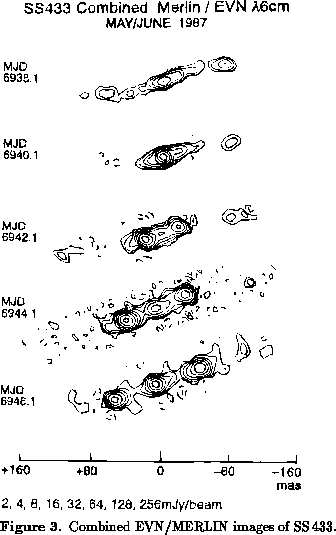In 1988 a series of seven MERLIN images were obtained by Spencer et al.
(1992). The observations were made at a wavelength of 18 cm, at
intervals of two to three weeks. The resolution of these images is
cm, typically enough to show substantial compact
emission.

During this period two knots were formed. They are linked to
flaring episodes. The brightness of these knots decayes with a 1/e
time of days. VLBI knots decay more rapidly. The brightness
temperature of the MERLIN knots is
K, compared to
K
for VLBI knots. A possible explanation for these observations is that
VLBI knots are related directly to individual flares, whereas MERLIN
knots may consist of a number of flares, ejected over a certain period
of time. Between the bright knots, a substantial amount of continuous
emission can been seen in MERLIN maps. It is not clear if this
emission also exists at low level on VLBI scales (
cm), or
whether it is formed at larger distances from the core.